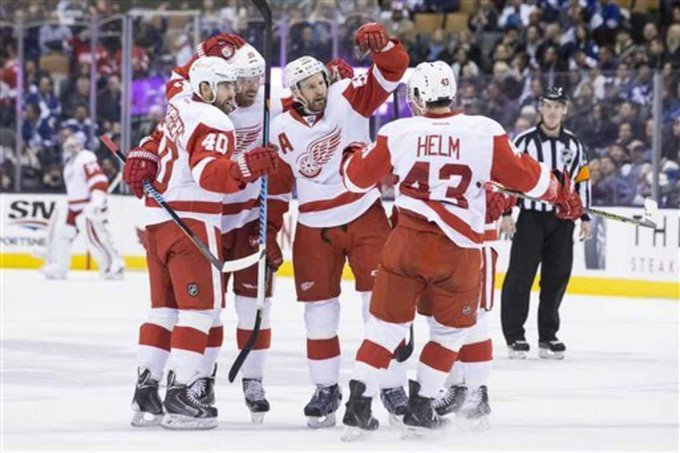
(Getty)
The National Hockey League has experienced a peculiar mumps outbreak that has specifically targeted its players.
On Sunday, the Pittsburgh Penguins organization officially released a statement that confirmed that their captain Sidney Crosby has the mumps and will be out indefinitely. Later in the same day, the New York Rangers sent center Derrick Brassard home in the midst of their annual northwestern road trip for fear that the 27-year-old player had come down with the virus, too.
The full list of players diagnosed can be found here.
This isn’t that uncommon for 2014, though. According to a December 15 USA Today article:
A nearly forgotten virus has made a comeback. Mumps sickened nearly 1,100 Americans this year, causing outbreaks among college students and professional hockey players. Nearly twice as many Americans have developed mumps this year as in all of 2013, according to the Centers for Disease Control and Prevention (CDC).
In the coming days and weeks, there may be more players diagnosed with the mumps because of the nature of NHL locker rooms and how the virus is contracted.
Here’s what you need to know:
1. The Mumps is an Infectious Viral Disease That Affects the Glands
The mumps is a contagious and infectious viral disease causing swelling of the parotid salivary glands in the face, and a risk of sterility in adult males. Symptoms include: fever, aches, loss of appetite or inability to eat because of the swelling. A male might also experience swollen testicles when dealing with the virus.
Most people fully recover from the mumps after a few weeks, although serious complications such as meningitis can occur in a severe case or if the virus isn’t dealt with properly.
2. Like a Cold or Flu, the Virus Can Easily Be Spread

(Getty)
According to the Atlanta-based Centers for Disease Control and Prevention, the virus can be dormant in somebody from anywhere to two to four weeks before any of the symptoms become visible. The Mumps virus spreads similarly like the common cold or flu.
It is spread through respiratory droplets of saliva and mucus from the mouth, nose and throat, which can happen through coughing and sneezing around others. When saliva is exchanged through sharing drinks (like water bottles), food, kissing etc., that can also spread the virus.
What happens is – in this case of the NHL athletes – they continue to go on with their daily routine, not realizing that they are in danger of continuing to spread the virus.
3. Immunization Doesn’t 100% Prevent the Infection

(Getty)
The MMR (Measles, Mumps and Rubella) two-dose vaccine is very effective, and can reduce the risk of contracting any of the three by up to 90% in comparison to somebody who isn’t immunized. However, that 10-20% people who don’t get vaccinated or receive just one of the two doses are at higher risk for initial contraction. Individuals who receive both can still be at risk in an environment where the virus is prevalent and in high-population settings such as school, college or even a sporting event.
In order to help stop the spreading, it is advised that the infected individual rest for up to a week, have all surfaces cleaned often (including bed sheets) and to not come into close contact with anyone during that time frame.
4. Crosby Only Headlines a List of Players Who Have Been Diagnosed

(Getty)
Crosby became the 13th NHL player officially diagnosed with the mumps this season as well as two referees. There is a possibility that others, including players from the St. Louis Blues who were battling bacterial infections back in October, may have also come down with the disease.
The early stages of a potential outbreak could be traced all the way back to early November when Anaheim Ducks defenseman Francois Beauchemin first noticed swelling in his jaw after a game against the Arizona Coyotes. Hours later, Beauchemin experienced the symptoms and then the virus made its way around the Ducks’ locker room, and later, to the rest of NHL teams.
5. Outbreaks Do Occur and the NHL is Susceptible When it Does Happen

(Getty)
Dr. Todd Hatchette, chief of service for microbiology at Capital District Health Authority in Halifax says that mumps outbreaks can occur periodically.
“We saw large outbreaks in 2007 and in 2009,” he said. And the NHL is the perfect breeding ground for a virus like the mumps. The NHL is like any enclosed population — like dorms or schools. These are people that are in close contact with one another for long periods of time, and they are the ones most at risk for getting any infections,” Hatchette said.”
Due to the nature of professional sports, athletes will always be a prime target for any kind of mild outbreak going around because of how many people associate closely to each other for such a long stretch of the year. This includes playing together, traveling together, rooming together and going out for a night-on-the-town together.
NHL teams like the Red Wings are taking careful precautions to make sure the virus doesn’t spread into their locker room.


